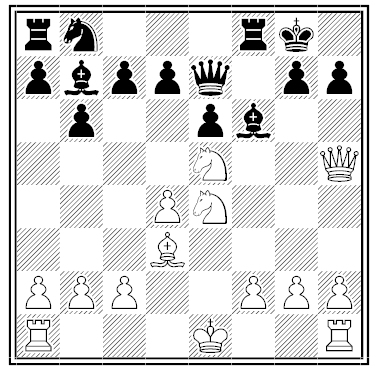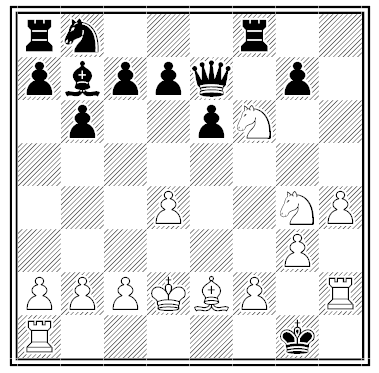Late in 1912, a 26-year-old German named Edward Lasker made his first trip to London. Still a bit seasick from a rough channel crossing, he made his way to the local chess club, as was his custom whenever he visited a new country. He spoke no English, but one of the members invited him to a game. Lasker took white, and they started innocently enough:
1. d4 e6 2. Nf3 f5 3. Nc3 Nf6 4. Bg5 Be7 5. Bxf6 Bxf6 6. e4 fxe4 7. Nxe4 b6 8. Ne5 O-O 9. Bd3 Bb7 10. Qh5 Qe7

But here the young German saw a remarkable opportunity, an eight-move combination that produced one of the most striking endings in chess history:
11. Qxh7+! Kxh7 12. Nxf6+ Kh6 13. Neg4+ Kg5 14. h4+ Kf4 15. g3+ Kf3 16. Be2+ Kg2 17. Rh2+ Kg1 18. Kd2#

Or 18. O-O-O#! “This was very nice,” said his opponent, who turned out to be Sir George Thomas, president of the club and later British champion. In after years Lasker would remember his effort modestly as “the most beautiful game I ever succeeded in winning,” but Mikhail Botvinnik was more forthcoming: “If Edward Lasker had played only one game in his entire life,” he wrote, “this would have been enough to preserve his name in the annals of time.”
